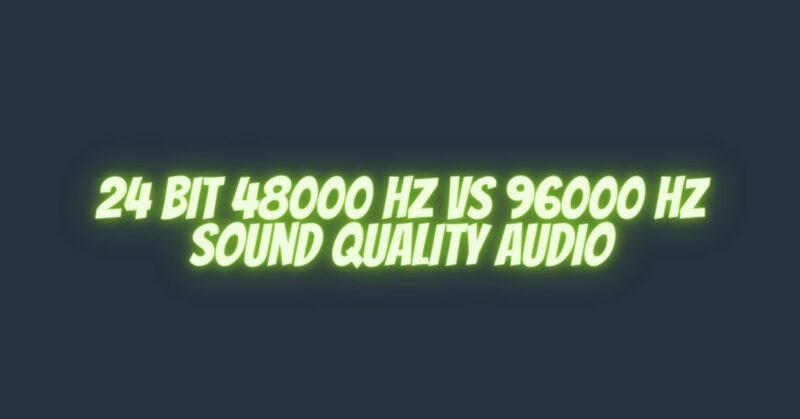24 bit 48000 hz and 96000 hz are two different audio formats that differ in their sample rate. Sample rate refers to the number of times per second that a sound wave is sampled.
Sample rate
48000 hz is the same sample rate that is used for CDs and most digital audio formats. It is sufficient for capturing and reproducing the entire range of human hearing (20 Hz to 20,000 Hz).
96000 hz is a higher sample rate than 48000 hz. It is capable of capturing and reproducing sound waves with frequencies up to 48,000 Hz. This is twice the range of human hearing.
Bit depth
Both 24 bit 48000 hz and 96000 hz audio can be recorded and played back at a bit depth of 24 bits. Bit depth refers to the number of possible values that can be used to represent the amplitude of a sound wave. A higher bit depth allows for a more accurate representation of the sound wave, especially at higher frequencies.
Sound quality
The higher sample rate of 96000 hz can theoretically provide better sound quality than 48000 hz. This is because it is able to capture more detail and nuance in the sound wave. However, the difference in sound quality is often difficult to hear with the human ear, especially on consumer-grade audio equipment.
In general, 24 bit 48000 hz audio is a good choice for most users. It provides high-quality sound that is indistinguishable from 96000 hz audio for most people. However, if you are using high-end audio equipment or if you are recording or reproducing music with a wide dynamic range, then 96000 hz audio may be a better choice.
Which audio format is better for you depends on your needs and preferences. If you are unsure which format to choose, it is always best to consult with a professional audio engineer.


